Originally published on February 8, 2023, this article has been updated on October 26, 2023 to reflect the latest research and statistics. Our editorial team has ensured you’re viewing the most current data on this topic. Need help or have a question? Email us.
Before I owned my own chicken flock, I didn’t know much about chickens. Like most humans, I thought chickens were dumb birds that were part of the human food chain—Boy, was I wrong! Chickens are incredibly intelligent and interesting.
Chickens know things I never believed they could. They learn, and chickens teach each other about things that can cause pain, how to overcome obstacles, and how to live together as a family.
Here are a few interesting facts about chickens that will teach you to look at chickens in a whole new light.
Interesting Facts About Chickens
The bird species Gallus domesticus, aka the domesticated chicken, first appeared in history 8,000 years ago. Humans have used chickens as pets, food, and even for their feathers for centuries.
Chicken keepers will reveal that chickens are easy to keep, don’t require much feed, and stick around without needing to enclose or fence them (other than to keep predators away).
Some other interesting facts about chickens include the following:
- A chicken can’t sweat. Chickens don’t sweat through their skin, relying on the cooling of capillaries under the skin by flapping their wings.
- The most eggs laid by a hen is 371 in a year. Hens can lay more than one egg in a day, with the record at seven eggs in one day.
- A chicken can live 5-8 years. The oldest chicken is recorded as reaching 20 years.
There Are More Than 33 Billion Chickens in the World (FAO)
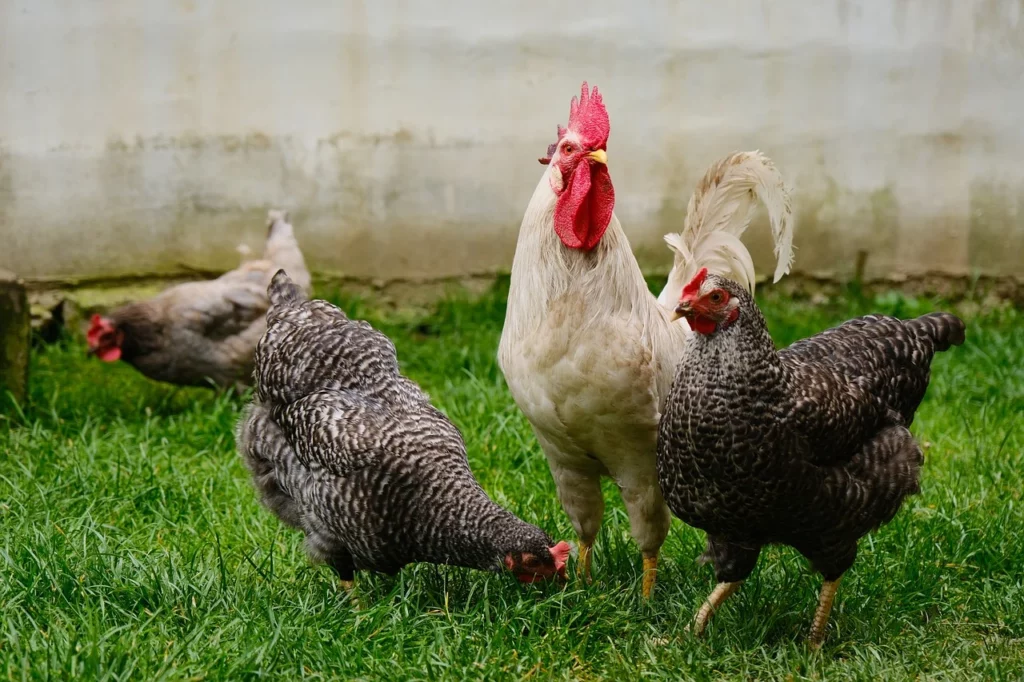
As of 2022, there are roughly 26.5 chickens worldwide, according to FAO statistics. According to Statista, there were 25.8 billion chickens worldwide in 2021. The Food and Agriculture Organization of the UN recorded the number as higher, with a global population of over 33 billion chickens in 2020.
Many chickens are raised in mainland China, with 5.14 billion chickens recorded there.
Chickens Fulfill the Global Demand for Animal-Source Food (FAO)
Humans have been eating chickens for many centuries as food.
Over 9 billion chickens were slaughtered for meat in 2021 (more chickens than previously) to satisfy the growing demand for animal-based protein foods that are affordable and cheaper to produce or raise than beef or sheep.
In addition to the chickens slaughtered for meat, chickens are kept to produce eggs, with the US consuming 111 billion eggs yearly.
Chickens Are Extremely Adorable and Smart Creatures (PETA)
Chickens make great pets, and chicken keepers insist that chickens are trainable and make great house pets, too.
Young chicks are soft and fluffy and make soothing sounds that all add up to make them cuddly pets. Chickens recognize your voice, and they come running when you call.
Chickens Are Capable of Distinguishing More Than 100 Faces (PETA)
When chickens live in flocks, they can distinguish different faces, as many as 100 different faces, but I also know that chickens can distinguish between different people and voices too.
When I walk among my pet flock, certain chickens will come running when called, but other people may call, and my chickens won’t respond.
Chickens Follow ‘Pecking Orders’ in Their Social Setup (PETA)

In the chicken flock, a pecking order establishes dominance between birds. Different hens start eating first, depending on where they rank in the pecking order.
Chicks compete for ranking in the pecking order as they grow older, mock fighting and using vocalizations for better placing on the rungs of their society and the right to eat first.
Chickens Are Not Colorblind (PETA)
Your chicken may see better than humans and some other animals. Studies have found that chickens have five different kinds of light receptors, which help chickens see and distinguish color and clarity.
Chickens Love to Take a Sunbath (PETA)
Like many animals, chickens love to lay in the sun, bathing in the heat, dirt, and light. Ultraviolet light rays can help chickens form vitamin D, which is essential for good bone health.
Chickens Bathe by Covering Their Bodies in the Sand (the Happy Chicken Coop)

Chickens love to bathe by digging their bodies into the dirt. Specific dirt spots will become communal dust bathing spots where they can fluff their feathers and manage pests like fleas and mites. Different types of dirt contain unique minerals that repel insects.
Chickens Experience Rapid Eye Movement (REM) When They Sleep (PETA)
According to PETA, chickens dream and experience rapid eye movement, where their eyes flutter rapidly from side to side when sleeping.
This sleep phase of dreaming is associated with unihemispheric slow-wave sleep, and it is something that indicates conscious thought among animals.
Humans experience rapid eye movement, too, when we sleep. Rapid eye movement indicates sleep and the ability to dream.
Chickens Can Experience Pain and Distress Via Pain Receptors (PETA)
Scientists have also found that chickens have emotions, displaying a range of feelings; we can distinguish from joy to sorrow and even empathy. It is reported that chickens feel pain and each other’s anxiety, indicating self-awareness.
A Mother Chicken Is Quite Defensive for Its Chicks (PETA)
Mother hens teach their chicks about life and defend their babies from predators.
A protective hen has personally chased me off if I bothered her chicks, and many farmers report their free-range hens attacking predators when they forage with their clutch.
Chickens Have More Than 30 Types of Vocalizations (PETA)
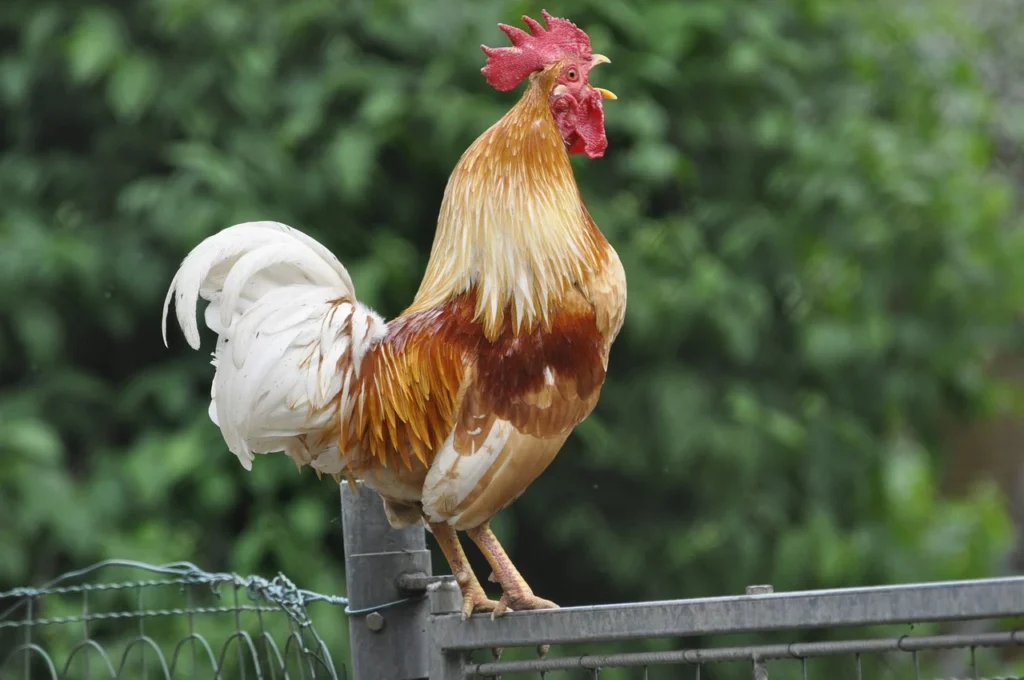
PETA found that chickens have the ability to distinguish and make different sounds, body language cues, and other signs to communicate with each other and warn off other chickens or predators.
When a chicken storms at you or predators in warning to protect her young, it’s not hard to see a tyrannosaurus rex (all feathered) coming at you.
Chickens use vocalizations to indicate when they feel pain, and chickens teach their young with sounds and squawks, much like other animals.
Chicken Moms Are Just Like Human Moms (PETA)
Some chickens will happily adopt orphaned chicks, indicating mother instinct, just like human moms. Like human mothers, a hen will protect her young from predators, and she will also spend time teaching them about life.
The hens will feel like they have to take care of their young, which is a feeling shared by all mothers.
Fun Facts About Chickens
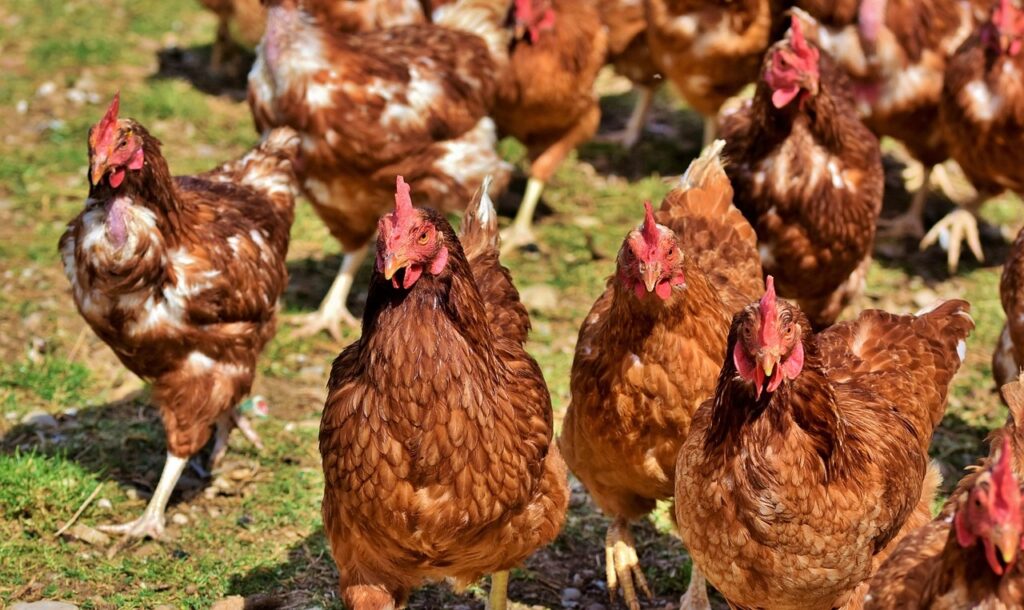
Chickens are fun animals. Watching a flock investigate something new in its environment can be quite entertaining for humans.
Young chicks, just like human babies, love to see new things, are gentle, and learn quickly. From sleeping in a large, feathered ball with their flocks to sheltering their babies under their wings, chickens are very unusual birds.
Chickens Are Omnivores, With a Great Memory (Lollypop Farm)
Unlike some animals with a limited diet, chickens are omnivores, which means they can eat meat and vegetables.
Chickens lay in the same nesting spot daily, sharing a dust bathing session with their other backyard chickens. With great memory, chickens also remember complex things like where the hen laid her eggs.
Chicken Communication Is Impressive and Complex, Encoding Specific Meanings (PETA)
More than 24 vocalizations have been recognized among chickens, which indicates higher intelligence.
Chickens communicate and show complex problem-solving skills required to teach other chickens how to find food and different socialization. With communication, chickens relay when they feel pain and anxiety.
The Egg Color of Chickens Are Determined by Their Genetics (Michigan State University)
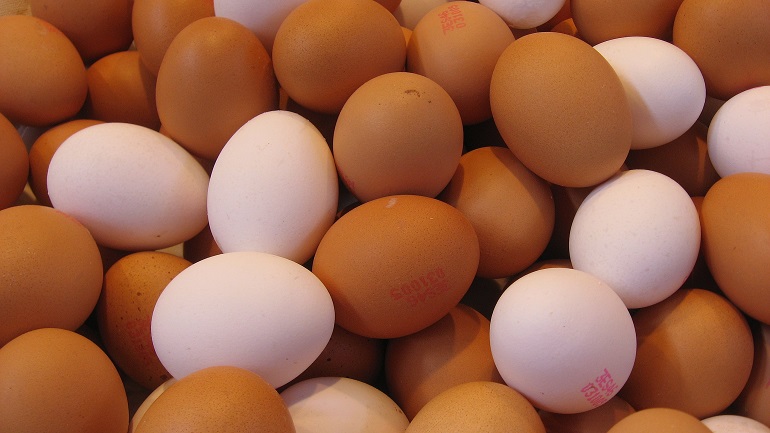
All eggs start off white inside the hen, but her genetic coding influences the eggs’ color when they are laid. Each hen’s particular genetic markers will influence whether the egg is smooth, pale, or a dark-colored egg.
White earlobes match white eggs, while red earlobes on a hen mean she will lay brown eggs.
Depending on the breed of chicken, chicken eggs will range in color from white, brown, and brick to blue and green.
White eggs and brown eggs are probably the most common, though green eggs are also popular among backyard chicken flocks.
Egg Shell Color Can Be Determined Through the Earlobe of a Hen (McGill)
By looking at the color of the flap of skin below a hen’s eye, you can tell what color her eggs will be. These skin sections are usually red, pale, or black.
The egg color will be white when the lobe is white, while darker lobes or red earlobes will produce brown eggs.
Green eggs result from breeds like the Araucana chicken, which have pale green earlobes.
Chickens Are the Closest Living Relatives of Dinosaurs (Smithsonian Magazine)
By comparing genetic material from a tyrannosaurus rex’s thigh bone with other genetic material from living animals, scientists were able to produce conclusive scientific evidence that these scary dinosaurs share the same collagen as chickens and crocodiles.
Of course, when you look at the body shape of a chicken skeleton and a tyrannosaurus rex, you’ll see striking similarities that may yet inspire the next Jurassic Park with a giant chicken eating everyone!
Chickens Like to Play and Teach Each Other (Sentient Media)
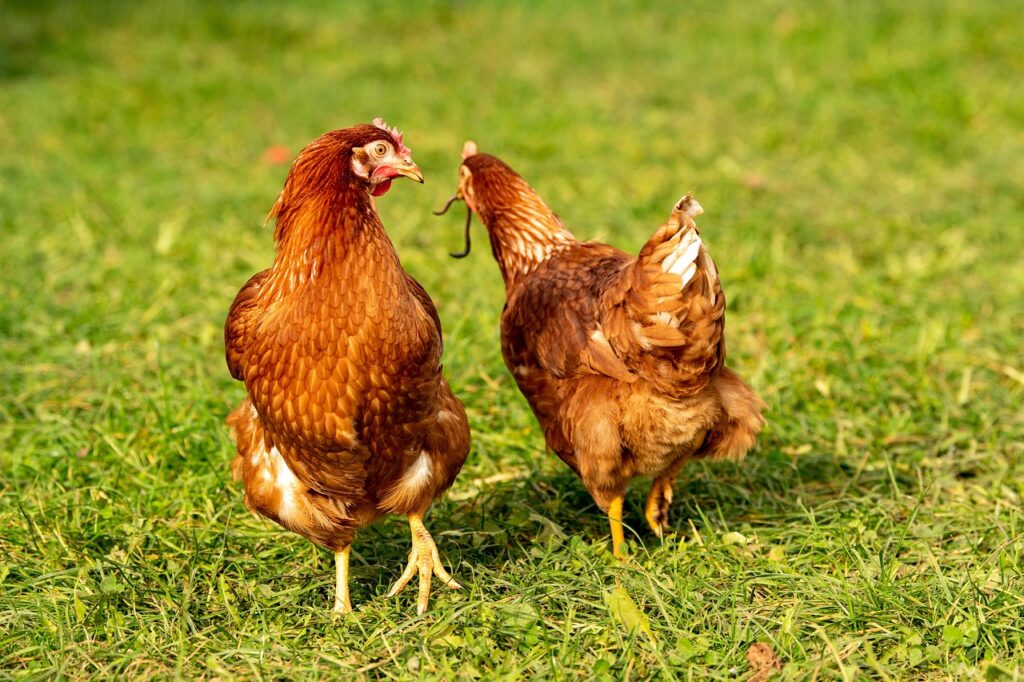
Believe it or not, chickens love to play and enjoy teaching each other about new things in their environment. Place an old chair in their coop, and you’ll enjoy watching them explore and jump up and down the chair (like kids on a jungle gym).
Pet Educate advocates using interesting foods, shiny objects, and novel items to stimulate your chickens while they play with their feathered friends.
Chickens can also show self-control by waiting for the feed to be given and choosing to wait for a larger food reward.
Chickens Have a High Running Speed (Learn Poultry)
Depending on the breed of chicken, a chicken can run a mile in 6 minutes and 40 seconds. With short bursts, chickens can reach even higher speeds.
The average chicken speed is rated as 9 miles per hour, with some birds (especially free-range bird species) reaching 15 miles per hour or more over short distances.
Chickens Are Not Solely Flightless (Science In Our World)
According to Science in Our World, chickens aren’t flightless. A chicken doesn’t have a gene that precludes the ability to fly.
Their body structure, overall weight-to-wing ratio, and ability to generate sufficient lift prevent chickens from soaring like other bird species.
But chickens can fly—they just don’t fly high or far.
Many farmers have reported how chickens prefer sleeping in the branches of trees instead of on the ground or how they fly over a fence, and many times, an angry mother hen will fly after a hawk that snatched a chick from her.
Chickens Have The Ability To Comprehend Object Permanence (NCBI)
Chickens can see object permanence by not believing something has disappeared just because it’s out of sight. Chickens have complex problem-solving skills to find a missing object.
Chickens can track hidden trajectories, and when following the path of a ball, chickens can predict where the ball will come out when it passes behind a screen, which indicates higher reasoning skills.
Chickens can also use echolocation to find food and other chickens. By hearing a sound, they can recognize and track the origin of that sound (such as a juicy bug, a missing chick, or an approaching predator).
A Few Chicken Breeds Are Getting Endangered (FAO)
We are so used to seeing chickens everywhere that it doesn’t occur to most of us that more chickens and specific breeds may be in danger of going extinct.
More chickens, known as heritage breeds, have become rare and are on a protected watchlist. These mother hens are vital to reestablishing breed numbers with each chick they hatch.
High Plains Journal shares that the American Livestock Breeds Conservancy has placed some chicken breeds on a protected list, which means these chickens are pure and not chicken crossbreeds that evolved.
FAQs
Can Chickens Smell?
A chicken’s sense of smell develops while still in the eggshell. Chickens use their ability to smell when they forage for beetles, worms, and other food sources.
Do Chickens Have Taste Buds?
Chickens can appreciate different tastes, but not to the extent that humans do. Chickens can taste some flavors, such as sweetness, due to having 240-360 taste buds, which are much less than human taste buds numbering more than 1,000.
Are Chickens Good as Pets?
A pet is interesting, caring, and great to touch, which is exactly what a chicken is. Chickens make excellent pets. They love attention, snuggling, and even watching TV. If properly socialized, your chicken can be an emotional support animal and a member of your family.
Which Country Has the Highest Number of Chickens?
China has the most chickens, with 5.14 billion of the world’s 33 billion chicken population being raised there.
America is next in terms of a country with many chickens, while Europe and Africa also have many chickens spread among the different countries making up these continents.
What Is the Scientific Name of Chicken?
The domesticated chicken is known by the scientific name of Gallus domesticus. The domestic chicken cross evolved from interbreeding the red junglefowl (their closest living relative today) and the gray junglefowl.
The descendants of this first mixed breed chicken were domesticated to eat grains, live in flocks, and possibly one of the first farm animals kept by humans.
Wrap Up
Chickens are amazing animals. Now you know some facts about chickens; you may have a deeper appreciation for chickens and their unique mannerisms.
Chickens make excellent pets, and any mother hen feels joy at the arrival of her clutch of chicks as they hatch from their eggs.
Whether they lay brown eggs or white eggs, chickens have a unique hierarchy or pecking order that they create their own family around, just like other animals have social systems too.
No farm would be complete without a few chickens running around or teaching children chicken facts. It’s also worth mentioning that chickens feel pain since they have pain receptors like other animals, yet they are often slaughtered in the most ruthless ways—and it’s up to us to change it.


